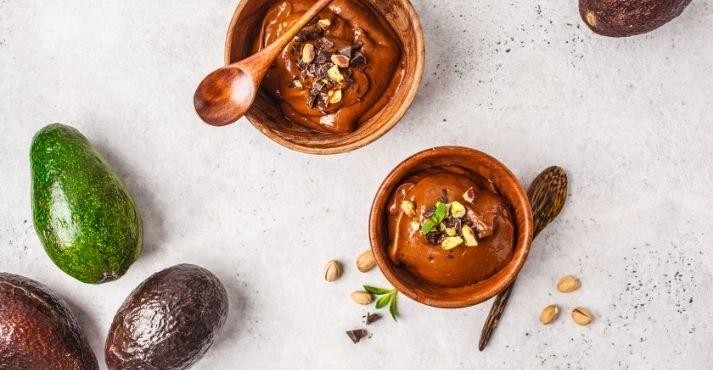What are consumers looking for in today’s food scene? More than ever, people want the best of both worlds—delicious food that doesn’t compromise their health.
This demand has given rise to healthy indulgence, where indulgence and nutrition come together. Consumers no longer want to feel guilty about enjoying their favorite treats but instead, seek ways to enjoy rich flavors while maintaining their wellness goals.
From healthy indulgent snacks to full meals, the rise of healthy indulgence reflects people’s desire to find balance. In Singapore and Southeast Asia, this shift is particularly noticeable.
It can be reinventing traditional dishes or crafting guilt-free desserts; the focus is on delicious food without compromising health. This movement isn’t just about eating better; it’s about enjoying food that satisfies cravings while providing nourishment.
The Rise of Health-Conscious Consumers
Today’s consumers, especially millennials and Gen Z, are driving the demand for healthier yet indulgent options. These generations prioritize wellness and sustainability and are willing to pay more for healthy, indulgent snacks that offer taste and nutrition.
Reports by Fortune Business Insights show that the global healthy snack market will reach USD 108.11 billion by 2027, reflecting the growing desire for foods that combine indulgence with health benefits.
Traditional dishes are being reimagined in Singapore and Southeast Asia to fit this trend. Take laksa, a rich and flavorful noodle soup that can now be made healthier with whole-grain noodles and lighter coconut milk alternatives.
Another example is kaya toast, a beloved breakfast dish made with multigrain bread and low-sugar spreads. It provides the same comforting taste in a healthier form.
Consumers are increasingly seeking foods that make them feel physically and mentally sound. They want the freedom to indulge without guilt, and that’s driving the rise of healthy, indulgent food options across restaurants and supermarkets.
Ingredients That Combine Indulgence with Nutrition

One of the most critical factors in creating healthy, indulgent food is carefully selecting ingredients that provide both indulgence and a nutritional punch.
Chefs and home cooks are now reimagining traditional indulgent dishes using healthier alternatives, making it possible to enjoy rich, satisfying meals without compromising wellness goals.
Here are some of the key ingredients that are transforming the world of indulgent foods:
- Dark chocolate: Known for its high antioxidant content, it has become a staple in healthier desserts. Unlike milk chocolate, which is often loaded with sugar, dark chocolate offers deep, indulgent flavor without the excessive sweetness. It is commonly used in healthier indulgent snacks such as chocolate-covered nuts or fruit, providing a guilt-free treat that still satisfies chocolate cravings. Singaporean chocolatiers have also adopted dark chocolate, offering options with high cocoa content that promote indulgence and wellness.
- Avocados: This creamy fruit is well-known for its healthy fats, particularly heart-healthy monounsaturated fats. Avocados are versatile, from savory dishes like salads and avocado toast to sweet indulgences like avocado-based chocolate mousse. Their healthy fat content allows indulgent, creamy textures without heavy cream or butter. In Southeast Asia, avocados are used in trendy smoothie bowls and even as a topping for plant-based burgers, adding flavor and nutrition to delicious food without compromising health.
- Whole grains: Replacing refined grains with whole grains is another essential strategy for creating healthier indulgent dishes. Whole grains, such as brown rice, quinoa, and whole-wheat flour, are high in fiber and nutrients, making them a smart choice for those seeking healthy, indulgent food For example, burgers with whole-grain buns and pizzas made with whole-wheat crusts are indulgent yet offer more fiber and vitamins than their traditional counterparts. In Singapore, local restaurants are incorporating whole grains into popular street foods, offering healthier versions of nasi lemak by replacing white rice with brown rice. This simple substitution maintains the hearty texture and flavor while increasing the meal’s nutritional value.
- Plant-based alternatives: As the demand for healthier and more sustainable food grows, plant-based alternatives are becoming a key player in indulgent eating. From dairy-free cheeses to plant-based meats, these alternatives allow people to enjoy indulgent textures and flavors while sticking to a healthier diet. For example, many restaurants across Singapore offer plant-based versions of nasi lemak and char kway teow. These dishes maintain the rich, bold flavors that make them beloved but are prepared using plant-based dairy, meats, and oils that contain less saturated fat.
Incorporating these nutritious ingredients into traditional recipes is helping to redefine comfort foods and making it easier for consumers to enjoy healthy, indulgent snacks and meals that align with their health goals.
These ingredients allow chefs and food manufacturers to create indulgent dishes lower in calories, fat, and sugar while still delivering the flavors people love.
Focusing on these ingredients, the rise of healthy indulgence is reshaping how we view comfort food. Consumers no longer need to choose between their health and their cravings; with the right ingredients, they can enjoy both.
Balancing Taste and Nutrition in Restaurant Menus

As the demand for healthy, indulgent food continues to rise, restaurant owners and chefs are innovating their menus to cater to this growing trend. Consumers are no longer satisfied with choosing between indulgence and health—they want both.
The challenge for culinary professionals lies in maintaining the rich, indulgent flavors that people love while reducing the use of unhealthy ingredients.
Successful restaurants, particularly in Singapore and across Southeast Asia, have already begun incorporating this shift by creating healthier versions of beloved dishes without sacrificing taste.
1. Reinventing Traditional Dishes
One of the most effective ways for restaurants to meet the demand for healthy, indulgent food is by reinventing traditional dishes. Singapore, known for its diverse and indulgent food culture, is seeing a wave of healthier versions of iconic dishes.
Restaurants are focusing on maintaining the authenticity of flavors while making smart substitutions that improve nutrition.
For instance, the famous dish nasi lemak is typically made with coconut rice and fried chicken, making it a high-fat meal. However, innovative chefs are rethinking this recipe using brown rice instead of white rice, which is higher in fiber and nutrients.
Additionally, fried chicken is replaced with grilled fish or chicken, which reduces unhealthy fats while maintaining the dish’s rich, savory taste. These small changes allow diners to enjoy their favorite dish without the guilt, offering a balanced approach to indulgence.
Another great example is char kway teow, a stir-fried noodle dish traditionally made with flat rice noodles, eggs, and plenty of oil. To make this dish healthier, restaurants opt for whole-wheat noodles and reduce the amount of oil used in cooking.
Some versions even incorporate leaner protein sources like grilled chicken or prawns instead of fatty meats, making the dish lower in calories and saturated fats but just as satisfying in flavor.
2. The Role of Portion Control and Ingredient Substitutions
In addition to swapping unhealthy ingredients for more nutritious alternatives, portion control is another crucial strategy restaurants adopt.
Instead of serving large, calorie-dense meals, some restaurants offer smaller portions of indulgent dishes, allowing customers to enjoy rich flavors in moderation. This approach helps balance taste and nutrition by ensuring diners still experience indulgence without overconsumption.
Ingredient substitutions also play a significant role in curating healthier menus. Whole grains are being used instead of refined grains, plant-based alternatives are replacing high-fat dairy and meat products, and natural sweeteners like honey or stevia are replacing refined sugars in desserts.
These simple but effective changes allow restaurants to maintain the indulgence factor while significantly improving the nutritional value of their dishes.
For example, a popular cafe in Singapore offers plant-based burgers topped with avocado and served on whole-grain buns. These burgers provide the same satisfaction as traditional beef burgers but are lower in saturated fat and calories.
Similarly, many restaurants use dark chocolate in their desserts, which is rich in antioxidants and lower in sugar than milk chocolate. These innovations prove that indulgence and health can go hand in hand.
Attracting Health-Conscious Diners
Restaurants can appeal to a growing group of health-conscious diners by curating menus that balance taste and nutrition. Today’s consumers are more aware of what they eat and its impact on their health.
As a result, they are actively seeking out restaurants that offer healthy, indulgent food options that allow them to enjoy their favorite flavors without compromising their wellness goals.
Offering such balanced options satisfies the rising demand for healthier meals and allows restaurants to stand out in a competitive market.
Transparent labeling, ethical sourcing, and sustainability efforts are also factors that attract these customers, as they are increasingly looking for restaurants that align with their values.
Restaurants quickly adapting to these preferences are positioning themselves for long-term success. They can market their menus as delicious and health-conscious, appealing to many customers who want the best of both worlds.
Focusing on flavor while making smart nutritional changes allows restaurant owners and chefs to meet the rising demand for delicious food without compromising health.
The Role of Technology in Innovating Healthier Indulgent Foods

Technology plays a significant role in the rise of healthy, indulgent food. Advances in food science and AI have enabled food manufacturers and restaurants to create indulgent, nutritious alternatives.
Plant-based meats, lab-grown foods, and AI-driven nutritional data analysis show how technology makes healthier options more accessible and tastier.
For example, food companies in Singapore, like Hoow Foods, are using AI to analyze meal nutritional content and suggest healthier ingredient swaps.
This allows chefs to retain the indulgent flavors of dishes while improving their nutritional profiles. Restaurants in Singapore are beginning to adopt these innovations, offering healthier versions of comfort foods without sacrificing taste.
“One of the best strategies for maximizing sales in this new market dynamic is for food companies to maintain sight of marketing the flavors and enjoyability of their foods when producing allergen-free, plant-based products.”
Jess Grelle, SVP of Innovation, Safe + Fair
By doing so, restaurants and food manufacturers can meet the demand for indulgence and health.
Consumer Behavior: Marketing Healthier Indulgent Foods
Marketing plays a crucial role in the success of healthy, indulgent food. Restaurant owners and food manufacturers must communicate that their products are delicious and healthy.
Transparent labeling, sustainability, and ethical practices are key factors in attracting health-conscious consumers.
Consumers today are looking for more than just taste. They want to know that their food is responsibly sourced and ethically produced. Brands that successfully convey this message will have an advantage in the competitive food market.
Promoting the health benefits of indulgent dishes while maintaining a focus on flavor can help brands appeal to a broader audience and capitalize on the growing trend of healthy indulgence.
Conclusion
The rise of healthy indulgence reflects a shift in how people approach food.
Consumers no longer want to choose between deliciousness and health. Instead, they seek healthy, indulgent snacks and meals that allow them to enjoy their favorite flavors without compromising their wellness goals.
With innovative ingredients, technology, and thoughtful menu curation, the food industry is evolving to meet this demand.
As the trend continues to grow in Singapore and across Southeast Asia, the future of food will be defined by its ability to satisfy both the body and the taste buds.





























